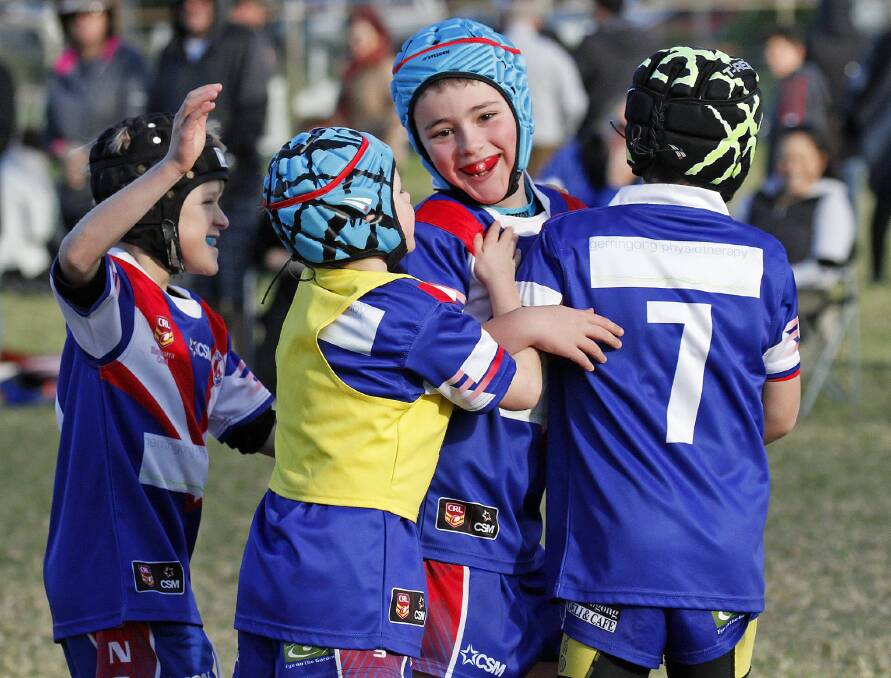
FOR the first time, rugby league participation across New South Wales has exceeded 100,000 with increased numbers of men, women, boys and girls playing the game in the country and city according to figures released on Thursday for the 2018 season.
Subscribe now for unlimited access.
or signup to continue reading
Country Rugby League’s total of 59,405 – an overall increase of 5.5 per cent, along with the NSW Rugby League’s total of 41,753 participants, an increase for the first time in five years (up 5.54 per cent from 39,560) – takes the combined total of participants across the state to 101,158.
Of particular interest are the growth numbers in Group Seven – which has a total of 9.5 per cent.
This figure includes a 26.6 per cent increase in females and 5.8 per cent increase in males on the South Coast.
Group Seven also ranked above the national average (67 per cent) for retention of players, with a 72.64 per cent rate – led by the Gerringong Lions, who rank in the top 10 across all of CRL for retention.
On top of this, the group has also seen an increase in coaches and volunteer numbers this season.
The release of national rugby league participation statistics revealed a number of positive outcomes for CRL, with one-third of all nationally registered players participating in CRL competitions; highlighted by the continual growth of female participation and positive results in several male participation segments.
Other key CRL figures included:
- 28 per cent increase in female participation, with 11,781 female players accounting for 48 per cent of nationally registered female participants.
- A small increase in male participation which accounts for 31 per cent of nationally registered male participants.
- Four out of six CRL regions recording growth in male participation.
- All six CRL regions recording growth in female participation.
- An increase in new and returning players to the game.
- Above national average retention rates for CRL clubs.
While pleased about the positive results achieved this season, CRL operations manager Bert Lowrie believes there is still work to be done to increase participation at all levels.
“The release of national participation statistics has validated the great work being done by clubs, administrators, volunteers, development officers and staff across regional NSW,” Lowrie said.
“While overall results are positive, we acknowledge there are many individual challenges regional areas face at a community sports level and there is no singular approach that can be taken to growing both junior and senior participation.
“CRL are working together with the NRL and state leagues on the creation of a player development framework to develop solutions to support and grow participation at all levels.
“There is often doom and gloom associated with regional participation statistics, but the figures indicate there is cause for optimism and the continuation of positive results in the years to come.”
The continual growth of female rugby league continues to produce phenomenal results, with the implementation of CRL women’s nines competitions across the state providing the impetus for increased participation.
“We’re extremely proud of the pathways being created for female participants in regional NSW and to see a 28 per cent increase to over 11,700 registered players is a great achievement,” Lowrie said.
“On top of this we have over 2000 players competing in alternative program formats like the CRL women’s nines which has led to the formation of additional tackle competitions throughout the state and we’re already seeing a huge increase in players to wanting to enrol in the nines this season.”
“Teenage participation is a challenging area for all sports and despite a small decrease overall, we’ve seen an increase in male under 16 to 18s numbers in three of our six regions and overall growth in male numbers in four of our six regions.
“We’ll continue to work closely with the NRL and state leagues on all areas of participation and we’re confident we’ll see improvements in teenage participation in the near future.”
Overall recruitment and retention rates also produced positive results with 12,656 new players introduced to the game and retention rates slightly up on national averages.

